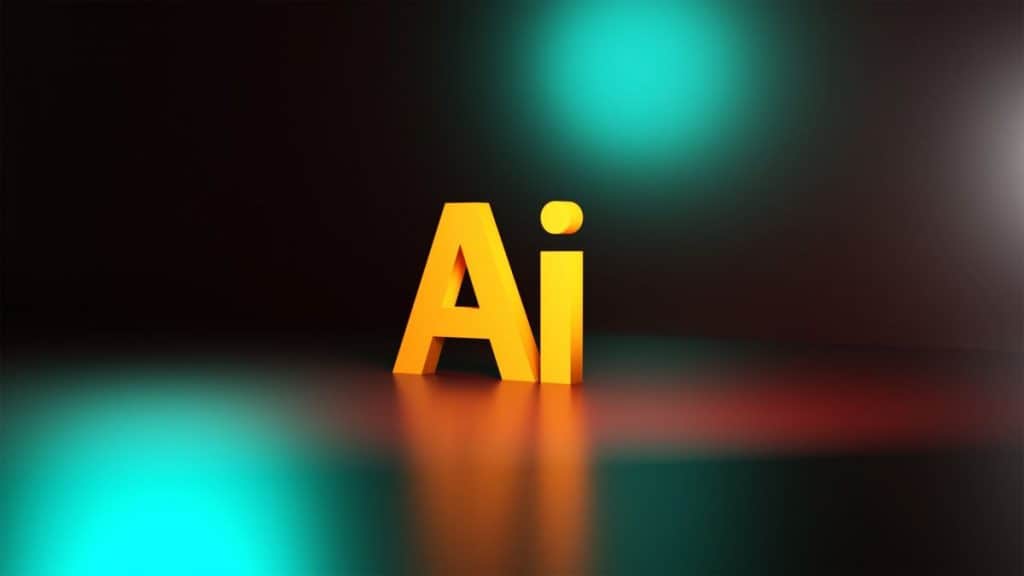After Text, AI Tools are Reshaping Design Workstreams in Inevitable Ways


In Brief
Design leader Won J. You explains why artists and designers should embrace AI tools in their creative processes.
The integration of artificial intelligence (AI) and design is not a replacement for human creativity but rather a collaborative transformation.
Empathy is at the core of every good design, enabling designers to act as a bridge between the emotional understanding required and the AI-generated output.

As the topic of artificial intelligence continues to dominate headlines, generative AI tools including Midjourney and Stable Diffusion have been met with both enthusiasm and apprehension in the design community.
For certain designers and artists, the rise of generative AI tools sparks resistance, making them feel that their creative prowess is being replaced by an artificial intellect. In contrast, those who have warmly embraced these budding technologies find themselves at the crossroads of human ingenuity and machine intelligence.
Won J. You, founder of Won J. You Studios, is a seasoned design leader and educator who’s most recently directed experience design work for Porsche, Edward Jones, Alzheimer’s Association, Bic, Cedar Fair, among others.
He incorporates diverse AI tools into multifaceted aspects of his creative process. These tools span research, ideation, copywriting, and visual editing.
In a recent interview with Metaverse Post, Won elaborated on his versatile approach, affirming,
”I find that tools like ChatGPT and CopyAI are incredibly helpful for UX writing and for copywriting, such as generating ideas for CTAs. For photo editing, I utilize Adobe Photoshop’s AI tools for removing backgrounds, and doing generative fills.”
He increasingly employs Google’s Bard in his discovery process, specifically for domain research, market analysis, and competitor assessment. On the visual front, tools like Midjourney help him explore visual concepts and artwork. For him, these creative concepts have proven particularly valuable in crafting moodboards and experimenting with various stylistic and color combinations.
Humans and AI as Creative Partners
Designers like Won and others no longer perceive AI as a competitor but rather as a collaborator, shifting the conflict between AI and human creativity into a narrative of partnership.
Weighing in on this narrative, Won said:
“Artists and designers should embrace AI tools in their creative process because, when used correctly, these tools can be leveraged to not only make their jobs easier but also help them expand their creative horizons. AI does not replace human creativity; it enhances it.”
In the architectural field, tools like BricsCAD BIM utilize AI to convert 2D sketches into intricate 3D models, offering real-time visualization for architects to refine their designs.
Zaha Hadid Architects also stand as an example, employing computational design in their workflow. This method leverages algorithms and predefined parameters to address design challenges and establish automated customized workflows.
Mitigating Bias in AI-Generated Designs
However, this collaborative landscape isn’t devoid of challenges. It’s no secret that AI systems can inadvertently perpetuate biases present in training data, potentially leading to biased output.
In an article published in Oct 2022, the World Economic Forum highlighted bias found in DALL-E mini when prompted to generate a “painting of a CEO founding a start-up in Europe.” None of the AI-generated paintings depicted a female as CEO.
To combat bias in AI, design technologists and researchers have been trying to infuse ethics into AI design processes. AI companies have also published their own responsible AI practices to steer the development and usage of their technologies.
As highlighted by MIT’s now-defunct “Gender Shades” project, which explored the racial and gender biases in facial recognition algorithms, designers must actively mitigate biases to ensure equitable design outcomes that resonate with diverse audiences.
However, Won said that governing the ethics of AI use will not be an easy task, especially when it comes to issues of originality, and authorship.
“What standard can we apply to determine whether a design has truly been transformed? I don’t believe we can establish something as straightforward as a percentage difference as a guideline to determine if the changes made to a design are sufficient to be considered new. For that reason, it will often come down to a judgment call,” he states.
Enhancing UI/UX through AI Insights
User experience (UX) and user interface (UI) design are also seeing a shift due to the rise of AI algorithms. These algorithms analyze user behavior patterns to create interfaces that intuitively cater to users’ needs.
For instance, Netflix employs AI to personalize its user interface, curating content recommendations that align with viewers’ preferences. This personal touch enhances user satisfaction and retention.
Won believes that the challenges of AI in the context of UX/UI design are less significant than in other areas such as advertising or digital art. “This is because it is not easy to patent the interface design of a digital product,” he explains.
Why AI Will Not Replace Human Designers
Amid growing reliance on AI-generated designs, critics frequently speculate about the diminishing human touch. However, designers actively seek a harmony between automation and the preservation of human creativity.
Addressing the emotional core of design, Won emphasized on empathy—a distinct human trait and skill absent in artificial intelligence.
“As cliché as it may sound, at the core of every good design is empathy.”
he says.
He explained how designers serve as conduits between the necessary emotional understanding and AI-generated results.
Won proposes that designers can utilize AI’s initial output as a foundation and imbue it with creativity, refinement, and emotional resonance to craft engaging designs. Consistent testing with actual users and the application of storytelling methods additionally authenticate the emotional influence of these designs.
Rob Girling, the co-founder of Artefact Group, a product strategy and UX design firm, echoes this sentiment.
“Today, most design jobs are defined by creative and social intelligence. These skill sets require empathy, problem framing, creative problem solving, negotiation, and persuasion. The first impact of AI will be that more and more non-designers develop their creativity and social intelligence skills to bolster their employability,” Girling wrote in a blog post about AI and the future of design.
Tackling Homogeneity in Design
Addressing concerns about homogeneity in design, Won acknowledged the existing challenges of commodification.
He said, “We live in a world where many aspects of design have become commodified.”
He points out the proliferation of templates and UI libraries that contribute to a sense of derivativeness. However, he emphasized that skilled designers must strike a balance between familiarity and uniqueness.
Won explains, “In the future, the only difference will be that designers will have to provide written prompts to instruct the AI on what they are seeking. Similar to Midjourney, they may need to use specific keywords like “skeuomorphic,” “fluorescent,” and “asymmetric” to generate the desired output.”
The evolution from manual experimentation to directed AI assistance marks a shift in the designer’s role.
In Girling’s blog post, he stated that designers of the future would need to take on more of a curator role.
“In the future, designers will train their AI tools to solve design problems by creating models based on their preferences,” he added.
A Glimpse of Tomorrow’s AI
As the partnership between human and AI is still in its nascent stages, Won believes that there is a need to fully comprehend the benefits of AI and its inherent limitations in order to fully take advantage of the collaborative process.
He suggests that even those with nascent ideas can benefit from creating prompts using tools like Midjourney to visualize concepts. These prompts resemble creative briefs, where increased detail and precision result in superior outcomes.
Similar dynamics occur between designers and their clients, echoing the common experience of receiving unclear or perplexing feedback. It’s crucial to acknowledge that AI is no better at deciphering poorly articulated directions than a human would be. Hence, designers must possess a clear vision and the ability to express instructions in a manner understandable to AI.
With the improvement of AI tools, Won envisions the potential emergence of auto-complete functionality in AI prompt engineering. This means AI could anticipate intended communication, though this development might still be a few years away.
Lastly, he predicts the possibility of uploading images of other design inspirations as source material. This would enable AI to use these images as reference points for generating UI, instead of relying solely on text prompts.
Disclaimer
In line with the Trust Project guidelines, please note that the information provided on this page is not intended to be and should not be interpreted as legal, tax, investment, financial, or any other form of advice. It is important to only invest what you can afford to lose and to seek independent financial advice if you have any doubts. For further information, we suggest referring to the terms and conditions as well as the help and support pages provided by the issuer or advertiser. MetaversePost is committed to accurate, unbiased reporting, but market conditions are subject to change without notice.
About The Author
Cindy is a journalist at Metaverse Post, covering topics related to web3, NFT, metaverse and AI, with a focus on interviews with Web3 industry players. She has spoken to over 30 C-level execs and counting, bringing their valuable insights to readers. Originally from Singapore, Cindy is now based in Tbilisi, Georgia. She holds a Bachelor's degree in Communications & Media Studies from the University of South Australia and has a decade of experience in journalism and writing. Get in touch with her via cindy@mpost.io with press pitches, announcements and interview opportunities.
More articles

Cindy is a journalist at Metaverse Post, covering topics related to web3, NFT, metaverse and AI, with a focus on interviews with Web3 industry players. She has spoken to over 30 C-level execs and counting, bringing their valuable insights to readers. Originally from Singapore, Cindy is now based in Tbilisi, Georgia. She holds a Bachelor's degree in Communications & Media Studies from the University of South Australia and has a decade of experience in journalism and writing. Get in touch with her via cindy@mpost.io with press pitches, announcements and interview opportunities.





















































